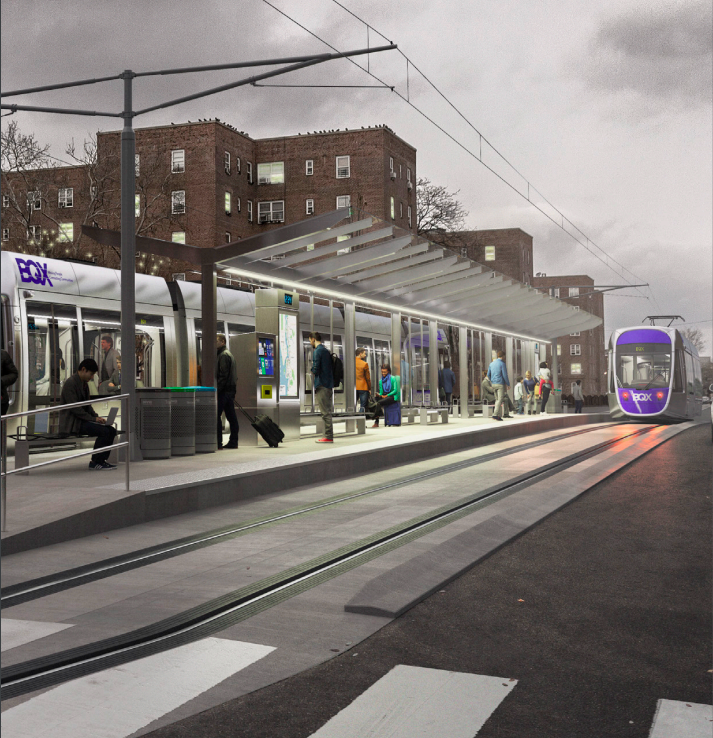BQX Project Takes Another Step Forward

[UPDATED: Wednesday, February 6 at 3pm] The office of Brooklyn Borough President Eric Adams provided the following statement regarding today’s announcement: “A 21st century city demands 21st century transportation solutions. Brooklyn’s future depends on serious mass transit investment, shared streets, and waterfront reactivation. That’s why I look forward to the results of the BQX Environmental Impact Study and further community engagement.”
RED HOOK/DOWNTOWN/GREENPOINT – On Wednesday morning the NYC Economic Development Corporation (EDC) awarded a $7.25 million contract to VHB, a civil engineering and design firm, to develop an Environmental Impact Study (EIS) for the Mayor’s proposed Brooklyn Queens Connector (BQX) streetcar project.

VHB will examine the potential environmental impacts of the BQX. The firm will begin the EIS this year and is expected to complete it by 2020, Curbed reports.
Mayor de Blasio announced plans for the BQX project in February 2016. The project would run along the developing Brooklyn-Queens waterfront, providing connectivity to areas lacking mass transit. The streetcar would increase public transit options for neighborhoods with more than half a million residents, including 40,000 in NYCHA housing, and for those who work along the Brooklyn-Queens waterfront, according to city officials.
The original 16-mile BQX proposal was revised in the summer of 2018, removing Sunset Park’s Brooklyn Army Terminal and Industry City from the route. The revised $2.7 billion 11-mile BQX route will connect Red Hook, Downtown Brooklyn, the Brooklyn Navy Yard, Williamsburg, Greenpoint, Long Island City, and Astoria.
City officials estimate that 50,000 commuters a day will ride the BQX during its first year of operation, increasing to 60,000 to 90,000 passengers by 2050. The BQX is expected to be ADA-accessible and run primarily on a “dedicated right-of-way” path. The system will be integrated with MTA subways and buses for fare payments and transfers.
The hiring of VHB “demonstrates a clear commitment from the de Blasio Administration to move [the BQX project] through the City’s Uniform Land Use Review Procedure (ULURP),” according to a release announcing the contract. EDC also announced its plans to expand community outreach and engagement efforts throughout the project’s scoping phase and ULURP process.
“We are pleased with the city’s commitment not just to moving the project forward, but to community engagement, which must play a central role,” Jessica Schumer, Executive Director of Friends of the Brooklyn Queens Connector, said in the release. “As the city grapples with a transit crisis, now is the moment for it to take control of its mass transit destiny and expand access wherever it can. The BQX is an essential first step and will provide a model for future city-run light rail lines in transit deserts across the city.”
VHB’s completion of the EIS would clear the way for the ULURP process, which is estimated to be completed by 2021, according to Curbed. Construction on the BQX would kick off in 2024 and is scheduled to be completed by 2029.




